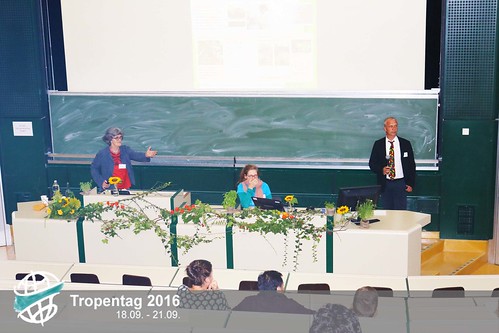Crop Diversity Poster Session - Amaranth for the Win
The first round of poster presentations took place this evening, with “Crop Diversity and Plant Breeding” showcasing its inaugural topics. Many the research projects of the session, including a handful of Master’s degree theses, such as an Andean tuber crop that can be used to treat diabetes; the amaranth plant which has religious Mayan significance; and sage genetic diversity, known for its seed oil uses.
One poster which stood out to me was the “unconventional vegetable” amaranth, presented by Roland Schafleitner. This plant can be used as both a grain and vegetable product, although it is highly perishable as the latter. This plant is popular in Africa and Asia, but no breeding research is currently being undertaken. It presents an opportunity for crop breeding and innovation, as well as collaboration between project cooperators (which the presenter is actively searching for!). It is an especially good research subject for genetic diversity as it is a C4 plant (resistant to heat and drought), and can produce new generations (and seeds) relatively quickly.
The presenter also offered a very human aspect to his presentation, giving a fun anecdote on the amaranth’s history. The punishment for cultivating this plant was once cutting off the hands, and yet, it perpetuated! The presenter was genuinely excited about this topic, which came across in a great way for the audience. Altogether it was a good reminder of why so many of us became interested in this field in the first place: our love and enthusiasm for agriculture.
Make sure to check out Roland Schafleitner’s poster titled “Genetic and Genomic Resources for Amaranth Breeding to Improve Income and Nutrition of Resource-Poor Farmers”.






Comments
Post new comment